Carbide inserts are the unsung heroes of the machining world. They might be small, but their impact on precision, durability, and efficiency in manufacturing processes is huge. When it comes to choosing the right carbide insert, especially from a massive market like China, the decision can be overwhelming. But don’t worry! This guide is here to help you navigate through the sea of options, manufacturers, and technical jargon.
We’ll dive deep into everything you need to know, from understanding what carbide inserts are, their applications, and properties, to a detailed comparison of top Chinese manufacturers. Ready? Let’s get started!
What Are Carbide Inserts?
Carbide inserts are cutting tools typically used in machining processes. They are made from a compound of carbon and another element, usually tungsten, which makes them incredibly hard and wear-resistant. These inserts are commonly used in lathes, milling machines, and drill presses, among other industrial machines.
Why are they important? Simply put, carbide inserts allow for precision, speed, and efficiency in machining operations. They can cut through tough materials like steel, cast iron, and non-ferrous metals with ease, making them invaluable in industries like automotive, aerospace, and manufacturing.

Types of China Carbide Inserts
China is a leading producer of carbide inserts, offering a wide range of types suited for different applications. Here’s a breakdown:
| Type | Description | Applications |
|---|---|---|
| CNMG (80° Diamond Insert) | Versatile, used in general turning and facing operations. | Suitable for roughing and finishing. |
| WNMG (Trigon Insert) | Offers six cutting edges for improved economy and efficiency. | Used in turning and boring operations. |
| TNMG (Triangular Insert) | Triangular shape with three cutting edges per side, perfect for grooving and turning. | Ideal for medium to heavy-duty machining. |
| CCMT (Diamond Shaped Insert) | Positive rake angle, reduces cutting forces, great for finishing. | Preferred for light turning and finishing. |
| DCMT (55° Diamond Insert) | High accuracy, suitable for fine finishing work. | Commonly used in precision machining. |
| VBMT (35° Diamond Insert) | Ideal for precision and finishing cuts, narrow geometry. | Best for finishing applications. |
| APKT (Rectangular Insert) | Provides high productivity in milling operations, stable during high-speed cutting. | Used in milling operations. |
| RPMT (Round Insert) | Offers the most cutting edges, very strong, and ideal for complex shapes. | Great for contouring and profiling. |
| SNMG (Square Insert) | Very robust, four cutting edges, suitable for heavy-duty turning. | Heavy machining, particularly on hard materials. |
| RCMX (Round Insert with Hole) | High edge strength, ideal for interrupted cuts. | Used in roughing operations. |
Applications of China Carbide Inserts
Carbide inserts from China are utilized across various industries due to their durability and precision. Here’s how different types fit into different machining needs:
| Application | Best Insert Type | Industry |
|---|---|---|
| General Turning | CNMG, WNMG | Automotive, General Manufacturing |
| Precision Finishing | CCMT, DCMT, VBMT | Aerospace, Electronics |
| Heavy-Duty Machining | SNMG, TNMG | Oil & Gas, Heavy Machinery |
| Milling Operations | APKT, RPMT | Tool & Die, Mould Making |
| Grooving and Parting | TNMG, VBMT | Automotive, Metal Fabrication |
| Contouring & Profiling | RPMT, RCMX | Aerospace, Medical Devices |
| High-Speed Cutting | APKT, VBMT | Precision Engineering, Watchmaking |
Material Properties of China Carbide Inserts
The quality of carbide inserts largely depends on their material composition and properties. Chinese manufacturers offer a variety of inserts made from high-quality materials, each tailored for specific tasks. Here’s what you need to know:
| Material Property | Description | Impact on Performance |
|---|---|---|
| Hardness (HRC) | Measures the material’s resistance to deformation. | Higher hardness provides better wear resistance. |
| Toughness | Ability to absorb energy and deform without fracturing. | Essential for avoiding chipping during heavy cuts. |
| Wear Resistance | Ability to withstand wear during machining. | Higher wear resistance extends tool life, especially in tough materials. |
| Thermal Conductivity | Determines how well the insert can manage heat. | Better thermal conductivity reduces the risk of thermal cracking. |
| Edge Strength | Strength of the cutting edge, crucial for maintaining precision. | Higher edge strength means longer-lasting, sharper edges. |
| Grain Size | Size of the carbide particles in the material. | Finer grain size typically leads to higher hardness and better performance. |
Composition, Properties, and Characteristics
Understanding the composition of carbide inserts can be like unlocking a secret code. It tells you how well an insert will perform under different conditions. Here’s a deeper look at what goes into these tiny powerhouses:
| Component | Role in Carbide Insert | Common Composition (% by Weight) |
|---|---|---|
| Tungsten Carbide (WC) | The primary material providing hardness and wear resistance. | 70-90% |
| Cobalt (Co) | Acts as a binder, providing toughness and holding the carbide grains together. | 5-15% |
| Titanium Carbide (TiC) | Improves wear resistance and thermal stability, especially in high-speed machining. | 0-10% |
| Tantalum Carbide (TaC) | Enhances strength and thermal resistance, making the insert more durable under intense conditions. | 0-5% |
| Nickel (Ni) | Adds corrosion resistance and toughness, particularly useful in aggressive environments. | 0-10% |

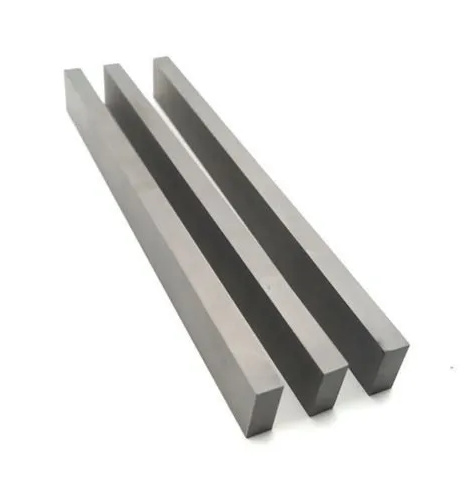
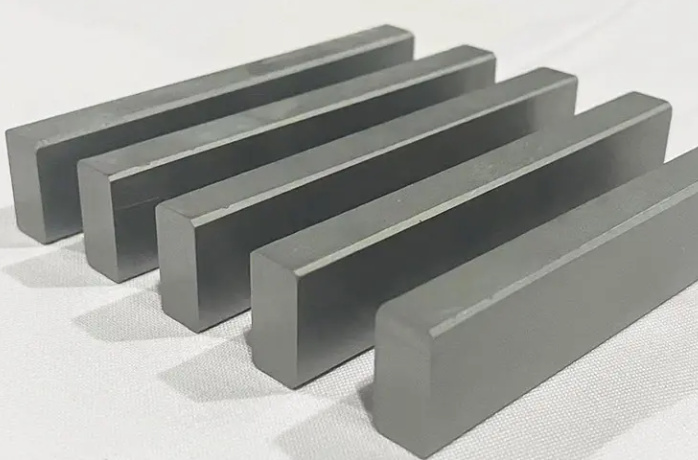
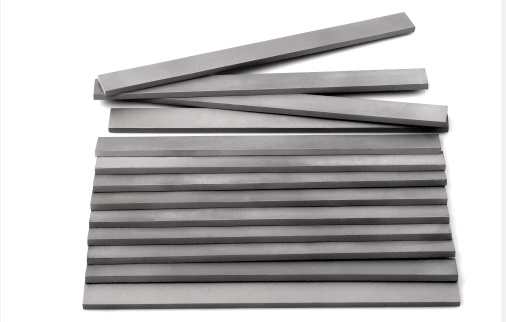
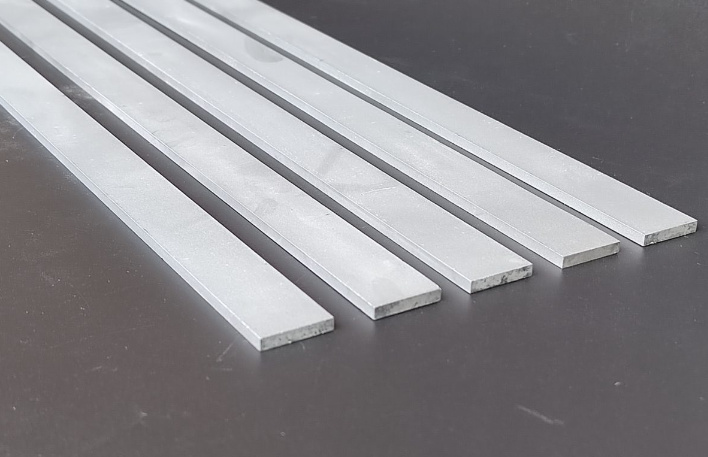
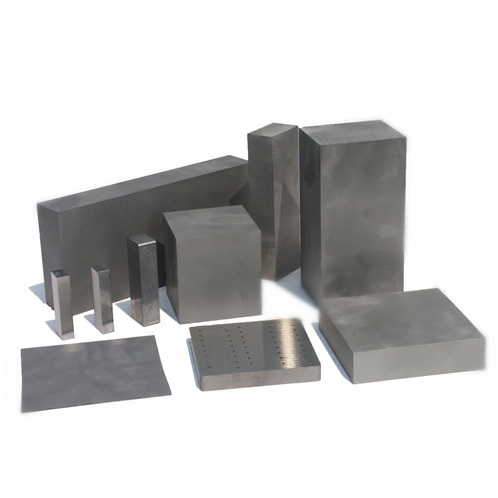
Hardness, Strength, and Wear Resistance
When it comes to machining, the three most critical properties of a carbide insert are its hardness, strength, and wear resistance. Let’s break down what these mean for you:
| Property | Description | Impact on Machining |
|---|---|---|
| Hardness | Ability to resist deformation, measured in HRC (Rockwell Hardness). | Ensures the insert remains sharp and effective over time. |
| Strength | Refers to the insert’s ability to withstand stress without breaking or deforming. | Higher strength means less breakage during rough machining. |
| Wear Resistance | Resistance to abrasion and erosion during cutting operations. | Higher wear resistance extends the tool life and reduces costs. |
Specifications, Sizes, Shapes, and Standards
Choosing the right carbide insert isn’t just about the material—it’s also about the fit. Here’s what you need to consider in terms of size, shape, and standards:
| Specification | Available Options |
|---|---|
| Insert Size | 04, 06, 08, 10, 12, 16, 20 (measured in mm) |
| Insert Shape | Diamond (C, D, V), Triangle (T), Square (S), Round (R), Rectangular (A, P) |
| Thickness | 2.5mm, 3.97mm, 4.76mm, 6.35mm |
| Corner Radius | 0.2mm, 0.4mm, 0.8mm, 1.2mm, 1.6mm |
| ISO Standards | P, M, K, N, S, H (Each letter represents a material group: Steel, Stainless, etc.) |
| Coating | PVD (Physical Vapor Deposition), CVD (Chemical Vapor Deposition) |
Choosing the Right China Carbide Insert Manufacturer
Selecting the right manufacturer is crucial. It’s not just about who can produce the cheapest insert but who can deliver consistent quality, reliable support, and tailored solutions for your specific needs.
Key Factors to Consider
| Factor | Why It Matters | What to Look For |
|---|---|---|
| Experience and Reputation | Established manufacturers are likely to provide consistent quality and reliable products. | Look for companies with a long history in carbide production. |
| Quality Control | Ensures the inserts meet the required specifications and standards. | ISO certifications, in-house testing labs. |
| Customization Capabilities | Ability to produce inserts tailored to your specific machining needs. | Manufacturers offering custom solutions. |
| Pricing | While cost is important, the cheapest option might not always be the best. | Competitive pricing with a balance of quality. |
| Lead Times and Delivery | Timely delivery can make or break your production schedule. | Quick turnaround times and reliable shipping. |
| Technical Support | Having access to technical expertise can be invaluable, especially for complex machining tasks. | Dedicated support teams and knowledgeable staff. |
Comparing Top Chinese Carbide Insert Manufacturers
Let’s put some of the top players head-to-head:
| Manufacturer | Strengths | Limitations |
|---|---|---|
| Zhuzhou Cemented Carbide | Renowned for high-quality products, extensive R&D, and innovation. | Slightly higher pricing compared to competitors. |
| Xiamen Golden Egret | Offers a wide range of inserts with quick lead times and competitive pricing. | Limited customization options compared to others. |
| Sichuan Guanghan | Strong focus on customized solutions with excellent technical support. | Smaller range of standard products. |
| Chengdu Santon | High quality control standards with extensive ISO certifications. | Longer lead times for custom orders. |
| Zhuzhou Jinggong | Cost-effective options with good performance for general applications. | Not as specialized in high-precision inserts. |
| Hunan Kingo | Known for innovative coatings and wear-resistant inserts. | Higher prices, particularly for advanced coated inserts. |
| Shanghai Tool Works | Offers a balanced mix of cost, quality, and technical support, making them a good all-rounder. | Slightly less focus on the latest technological advancements. |
| Henan YG | Focuses on high-volume production, ideal for large-scale operations. | Less focus on high-end or specialized inserts. |
| Zhuzhou Hongtong | Specializes in tough applications with strong performance in heavy-duty machining. | Smaller product range, especially in precision inserts. |
| Chengdu Tianhui | Known for precision inserts and strong customer service. | Pricing can be on the higher side for advanced products. |
How to Select the Right Carbide Insert Manufacturer in China
Choosing a carbide insert manufacturer is like choosing a partner for your machining needs. The right choice can lead to enhanced productivity, lower costs, and happier customers. But how do you make the right choice?
Steps to Select the Right Manufacturer
- Understand Your Needs: What exactly do you need the inserts for? Different applications require different inserts, and some manufacturers specialize in specific types.
- Research Manufacturers: Look into their experience, product range, and customer reviews. It’s like checking the credentials of a potential business partner.
- Request Samples: Before committing to a large order, request samples to test in your specific applications.
- Evaluate Technical Support: Do they offer technical assistance? This can be a lifesaver when you’re dealing with complex machining tasks.
- Consider Total Cost: Don’t just look at the price of the inserts. Consider shipping costs, lead times, and potential downtime if the inserts don’t perform as expected.
- Check Certifications: ISO certifications and other quality assurances can give you peace of mind that you’re dealing with a reputable manufacturer.
Advantages and Limitations of China Carbide Inserts
| Aspect | Advantages | Limitations |
|---|---|---|
| Cost-Effectiveness | China offers competitive pricing, often lower than Western counterparts. | Lower prices can sometimes mean lower quality, so choose carefully. |
| Wide Variety | A broad range of inserts available for different applications. | The sheer number of options can be overwhelming. |
| Customization | Many manufacturers offer custom solutions tailored to specific needs. | Customization can lead to longer lead times and higher costs. |
| Availability | Large production volumes mean that standard inserts are usually readily available. | For very specialized inserts, availability might be limited. |
| Innovation | Some Chinese manufacturers are at the forefront of carbide insert technology, particularly in coatings. | Not all manufacturers invest in R&D, so innovation can vary widely. |
| Quality Control | Many Chinese manufacturers have adopted stringent quality control processes, ensuring reliable products. | Quality can vary significantly between manufacturers, so thorough vetting is essential. |

FAQs
Here are some of the most common questions people have when choosing carbide inserts and manufacturers in China:
| Question | Answer |
|---|---|
| What are the key benefits of using carbide inserts? | Carbide inserts offer high wear resistance, longer tool life, and the ability to maintain sharp edges, leading to improved machining performance. |
| How do I know if a Chinese manufacturer is reliable? | Look for ISO certifications, positive customer reviews, and a strong track record in the industry. Requesting samples before placing a large order is also a good idea. |
| Can I customize carbide inserts for my specific needs? | Yes, many Chinese manufacturers offer customization options, allowing you to tailor the inserts to your specific applications. |
| Are Chinese carbide inserts of lower quality? | Not necessarily. While some cheaper options might compromise on quality, many Chinese manufacturers produce high-quality inserts comparable to global standards. |
| How do I choose the right insert shape and size? | The choice depends on your machining application. For example, diamond-shaped inserts are good for precision, while square inserts are better for heavy-duty cutting. |
| What is the typical lead time for orders? | Lead times can vary from a few days to several weeks, depending on the manufacturer and whether you’re ordering standard or customized inserts. |
| How does the coating affect carbide inserts? | Coatings like PVD and CVD improve wear resistance and extend the life of the insert, especially in high-speed or high-temperature operations. |
| What should I consider when comparing prices? | Don’t just look at the upfront cost. Consider the insert’s lifespan, performance, and how it will affect your overall machining efficiency. |
| Can carbide inserts be used on all materials? | Carbide inserts can be used on a wide range of materials, but the specific type of insert should be chosen based on the material being machined. |
| What are the common signs that an insert needs replacing? | Look for signs like increased wear, chipping, a decline in surface finish quality, and higher cutting forces during machining. |
Conclusion
Choosing the right carbide insert and manufacturer, especially from a broad market like China, can feel like navigating through a complex maze. But with the right information, you can make a decision that enhances your machining processes, reduces costs, and ultimately boosts your productivity.
Whether you’re looking for cost-effective solutions or high-precision inserts, China offers a vast range of options. The key is to do your homework, understand your needs, and partner with a manufacturer that aligns with your goals.
Hopefully, this guide has provided you with the insights needed to make an informed choice. Remember, in the world of machining, the smallest tools can make the biggest difference!


